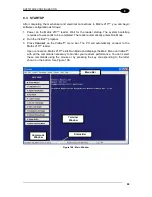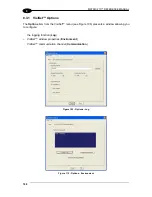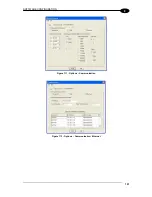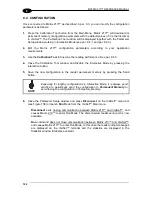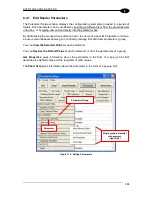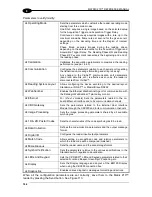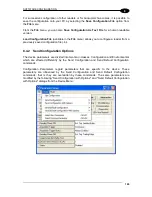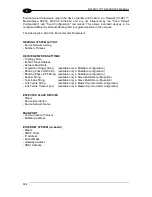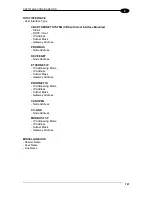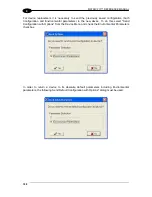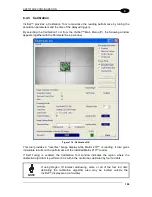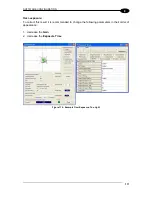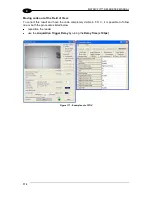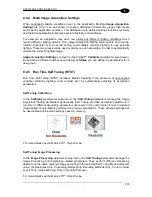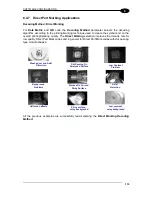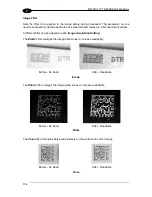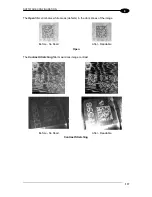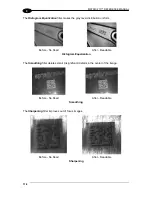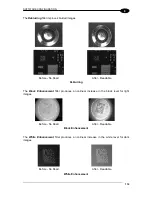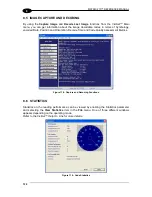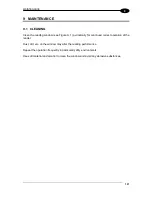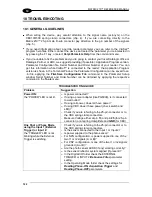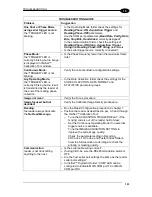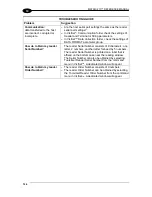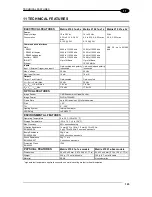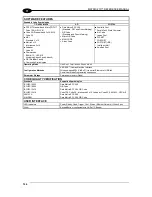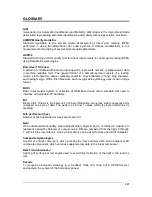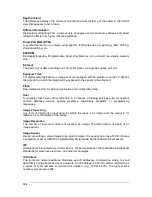
SOFTWARE CONFIGURATION
113
8
8.4.4 Multi Image Acquisition Settings
When controlled variable conditions occur in the application, Multiple
Image Acquisition
Settings
(up to 10), can be defined to create a database of parameter groups that handle
each specific application condition. This database of pre-defined settings functions cyclically
and therefore automatically improves system flexibility and readiness.
For example, an application may have two stable but different lighting conditions which
require different lighting options. One Image Acquisition Setting could enable and use the
internal illuminator and a second setting could disable Internal Lighting to use external
lighting. These two groups will be used cyclically on each acquisition in order to automatically
capture the correctly lighted image.
Image Acquisition Settings
are found in the VisiSet™
Calibration
parameter setup menu.
By selecting a different number and enabling its
Status
you can define the parameters for a
new group.
8.4.5 Run Time Self Tuning (RTST)
Run Time Self-
Tuning (RTST) increases Matrix’s flexibility in the presence of uncontrolled
variable conditions (lighting, code contrast, etc.) by automatically adjusting its acquisition
parameters.
Self Tuning Calibration
In the
Calibration
parameter setup menu, the
Self Tuning
parameters manage the Image
Acquisition Setting parameters dynamically. Self Tuning provides automatic adjustment in
run time of different acquisition parameters (
Exposure Time
and/or
Gain
) for each captured
image based on calculations performed on previous acquisitions. These dynamic settings will
be used instead of the static settings saved in memory.
For more details see the Matrix 210™ Help On-Line.
Self Tuning Image Processing
In the
Image Processing
parameter setup menu, the
Self Tuning
parameters manage the
Image Processing and Symbology related parameters. They perform different processing
attempts on the same captured image according to the selected Self Tuning Mode parameter
value: (
Symbologies Only,
Processing Modes Only, Decoding Methods Only, Code Contrast
Levels Only, Image Mirroring Only, or General Purpose
).
For more
details see the Matrix 210™ Help On-Line.
Summary of Contents for Matrix 210
Page 1: ...MATRIX 210 Reference Manual...
Page 142: ...www datalogic com...

